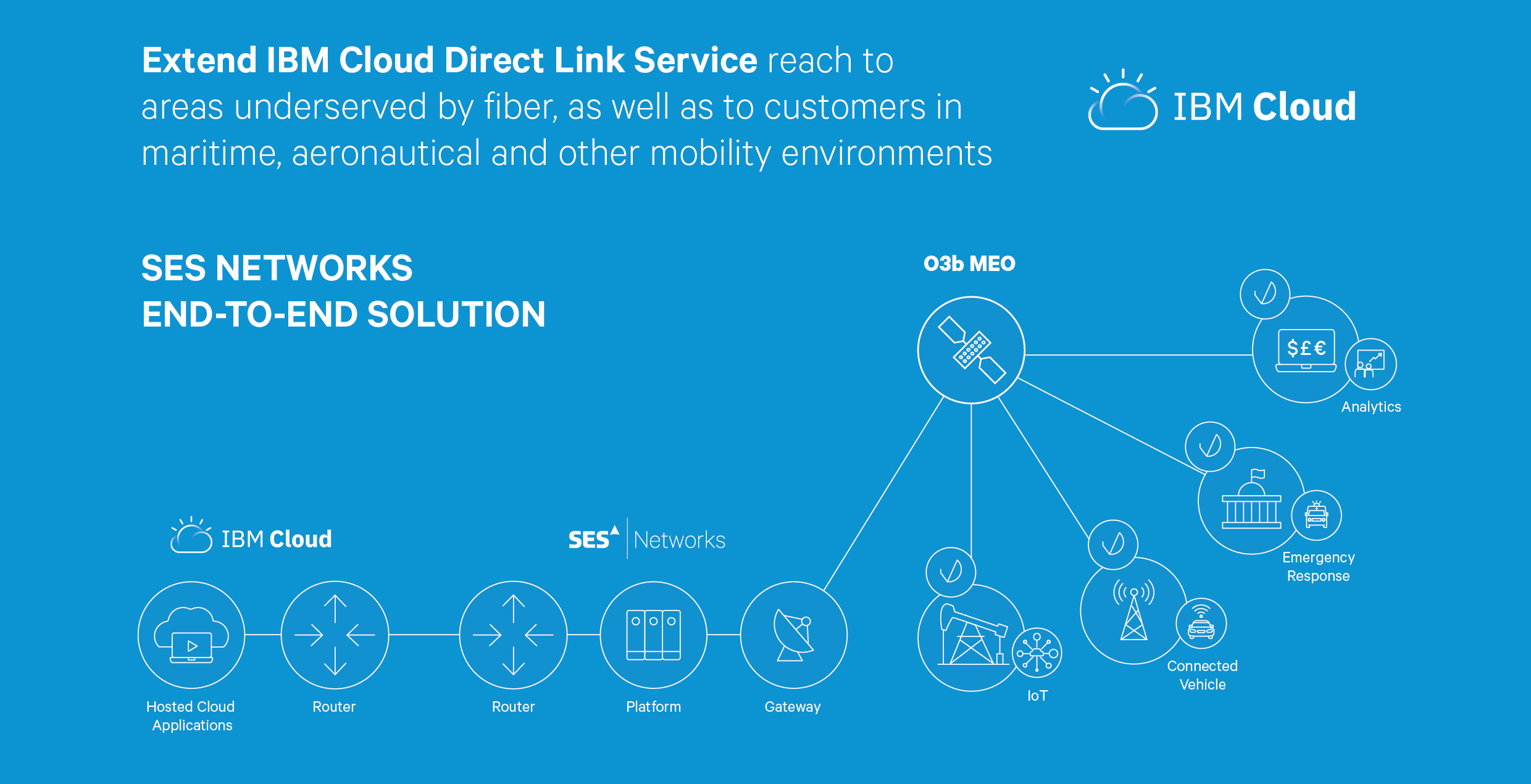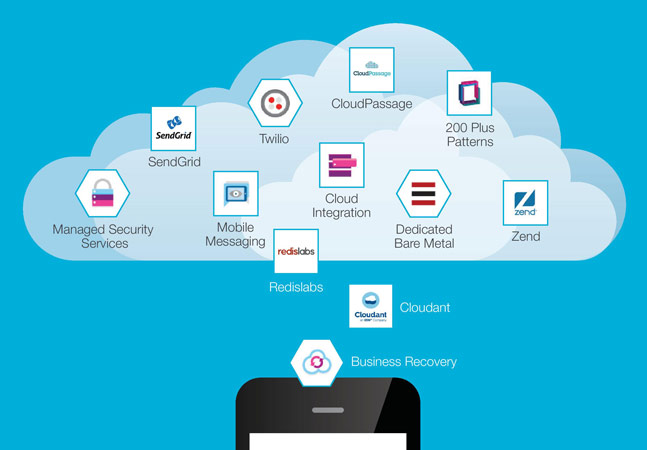What are IBM Cloud Networking Services?
IBM Cloud Networking Services is a suite of advanced networking solutions designed to help businesses and organizations enhance their network infrastructure and capabilities. These services offer a range of key features and benefits, including scalability, security, and reliability. By leveraging IBM Cloud Networking Services, businesses can create robust and adaptable network environments that can grow and evolve with their needs.
At the heart of IBM Cloud Networking Services are several core offerings, including virtual private clouds (VPCs), load balancers, and security groups. VPCs allow businesses to create isolated network environments within the IBM Cloud, providing enhanced security and control. Load balancers distribute network traffic across multiple servers, ensuring optimal performance and availability. Security groups offer fine-grained control over network access, allowing businesses to define who can access their resources and under what conditions.
IBM Cloud Networking Services are designed to be highly scalable, allowing businesses to quickly and easily add or remove resources as needed. This flexibility makes it an ideal solution for businesses of all sizes, from small startups to large enterprises. Additionally, IBM Cloud Networking Services offer robust security features, including encryption, access controls, and intrusion detection and prevention, helping businesses protect their data and resources from unauthorized access and attacks.
One of the key benefits of IBM Cloud Networking Services is their reliability. IBM Cloud Networking Services are built on a highly available and redundant infrastructure, ensuring that businesses can rely on their networks to be up and running when they need them. This is particularly important for businesses that rely on their networks for mission-critical applications and services.
Core Offerings in IBM Cloud Networking
IBM Cloud Networking Services offer a range of core components that work together to create a robust and adaptable network environment. These core offerings include:
- Virtual Private Clouds (VPCs): VPCs allow businesses to create isolated network environments within the IBM Cloud. This provides enhanced security and control, as well as the ability to create separate network segments for different applications or workloads. VPCs can be easily customized and scaled to meet the specific needs of each business.
- Load Balancers: Load balancers distribute network traffic across multiple servers, ensuring optimal performance and availability. IBM Cloud Networking Services offer a variety of load balancing options, including global load balancing, which allows businesses to distribute traffic across multiple data centers or regions for even greater reliability and performance.
- Security Groups: Security groups offer fine-grained control over network access, allowing businesses to define who can access their resources and under what conditions. Security groups can be used to restrict access to specific IP addresses or ranges, as well as to enforce specific security policies.
By combining these core offerings, businesses can create highly available and secure network environments that can be easily customized and scaled to meet their specific needs. Additionally, IBM Cloud Networking Services offer a range of advanced features, such as network automation, monitoring, and analytics, that can help businesses optimize their network performance and security.
IBM Cloud Networking Services also offer seamless integration with other IBM Cloud offerings, such as IBM Cloud Identity and Access Management (IAM) and IBM Cloud Monitoring. This allows businesses to create end-to-end network and security solutions that are fully integrated with their existing infrastructure and tools.
How to Implement IBM Cloud Networking Services
Implementing IBM Cloud Networking Services can provide significant benefits for businesses and organizations looking to enhance their network infrastructure and capabilities. Here is a step-by-step guide on how to set up and configure IBM Cloud Networking Services:
- Create a VPC: The first step in implementing IBM Cloud Networking Services is to create a virtual private cloud (VPC). This can be done through the IBM Cloud console by navigating to the VPC dashboard and clicking “Create VPC.” From there, businesses can define the VPC’s name, region, and IP address range.
- Configure Subnets: Once the VPC has been created, businesses can configure subnets within the VPC. Subnets allow businesses to segment their network and control access to specific resources. To create a subnet, navigate to the VPC dashboard, select the VPC, and click “Create Subnet.” From there, businesses can define the subnet’s name, IP address range, and associated route table.
- Create Load Balancers: Load balancers can be used to distribute network traffic across multiple servers, ensuring optimal performance and availability. To create a load balancer, navigate to the IBM Cloud console, select “Load Balancers” from the navigation menu, and click “Create Load Balancer.” From there, businesses can define the load balancer’s name, associated VPC, and listener configuration.
- Configure Security Groups: Security groups offer fine-grained control over network access, allowing businesses to define who can access their resources and under what conditions. To create a security group, navigate to the VPC dashboard, select the VPC, and click “Create Security Group.” From there, businesses can define the security group’s name, associated VPC, and inbound and outbound rules.
When implementing IBM Cloud Networking Services, businesses should be aware of potential challenges, such as network configuration errors or security vulnerabilities. To mitigate these risks, businesses should follow best practices, such as using secure passwords, enabling multi-factor authentication, and regularly monitoring network activity.
By following these steps, businesses can quickly and easily set up and configure IBM Cloud Networking Services, providing a robust and adaptable network environment that can be easily customized and scaled to meet their specific needs.
Real-World Applications of IBM Cloud Networking Services
IBM Cloud Networking Services have helped numerous businesses and organizations enhance their network infrastructure and capabilities. Here are some case studies and success stories that highlight the specific challenges these companies faced and how IBM Cloud Networking Services helped address those issues:
- Company A: Company A, a large financial services firm, needed to enhance its network infrastructure to support growing demand for digital services. By implementing IBM Cloud Networking Services, Company A was able to create a highly available and scalable network environment that could support millions of users. This resulted in improved performance, reduced downtime, and increased customer satisfaction.
- Company B: Company B, a healthcare provider, needed to improve network security to protect sensitive patient data. By implementing IBM Cloud Networking Services, Company B was able to create a secure network environment that met regulatory requirements for data protection. This resulted in improved patient trust, reduced risk of data breaches, and increased compliance.
- Company C: Company C, a retailer, needed to enhance its network infrastructure to support growing demand for online sales. By implementing IBM Cloud Networking Services, Company C was able to create a highly available and scalable network environment that could support millions of transactions. This resulted in improved performance, increased sales, and improved customer satisfaction.
These case studies demonstrate the real-world benefits of IBM Cloud Networking Services. By providing a robust and adaptable network environment, businesses and organizations can enhance their network infrastructure and capabilities, resulting in improved performance, increased security, and greater customer satisfaction.
Comparing IBM Cloud Networking Services to Competitors
When it comes to cloud networking services, IBM is one of several major players in the market, competing with the likes of Amazon Web Services (AWS) and Microsoft Azure. Here’s a comparison of IBM Cloud Networking Services to its competitors, discussing pricing, features, and performance, and identifying areas where IBM excels or falls short:
- Pricing: IBM Cloud Networking Services offers competitive pricing compared to its competitors. IBM charges based on usage, with no minimum fees or upfront costs. This allows businesses to pay for only what they use, making it a cost-effective solution for many organizations.
- Features: IBM Cloud Networking Services offers a robust set of features, including virtual private clouds (VPCs), load balancers, and security groups. These elements work together to create a highly available and adaptable network environment. IBM also offers advanced features, such as network automation, monitoring, and analytics tools, that can help businesses optimize their network performance and security.
- Performance: IBM Cloud Networking Services offers high performance and reliability, with low latency and high throughput. IBM’s global network of data centers ensures that businesses can access their resources quickly and easily, no matter where they are located.
- Areas of Excellence: IBM Cloud Networking Services excels in several areas, including security, scalability, and integration. IBM offers robust security features, such as encryption, access controls, and intrusion detection and prevention, that can help businesses protect their data and resources. IBM’s scalability allows businesses to quickly and easily add or remove resources as needed, making it a flexible solution for many organizations. Additionally, IBM offers seamless integration with other IBM Cloud offerings, such as IBM Cloud Identity and Access Management (IAM) and IBM Cloud Monitoring.
- Areas for Improvement: While IBM Cloud Networking Services offers many benefits, there are areas where it could improve. For example, IBM’s user interface could be more intuitive and user-friendly, making it easier for businesses to set up and configure their network environments. Additionally, IBM could offer more comprehensive documentation and support resources to help businesses get the most out of their cloud networking services.
Overall, IBM Cloud Networking Services is a robust and adaptable solution for businesses and organizations looking to enhance their network infrastructure and capabilities. While there are areas where IBM could improve, its competitive pricing, robust set of features, and high performance make it a strong contender in the cloud networking services market.
Optimizing IBM Cloud Networking Services for Your Business
IBM Cloud Networking Services offer a range of features and benefits that can help businesses and organizations enhance their network infrastructure and capabilities. To get the most out of IBM Cloud Networking Services, it’s important to employ best practices and strategies for optimization. Here are some tips and strategies for optimizing IBM Cloud Networking Services:
- Monitoring and Analytics: IBM Cloud Networking Services offers robust monitoring and analytics tools that can help businesses track network performance, identify potential issues, and optimize network traffic. By regularly monitoring network activity and analyzing performance data, businesses can identify areas for improvement and make adjustments as needed.
- Automation: IBM Cloud Networking Services offers automation features that can help businesses streamline network management and reduce the risk of errors. By automating routine tasks, such as network configuration and scaling, businesses can save time and resources, and improve network performance and security.
- Integration with Other IBM Cloud Offerings: IBM Cloud Networking Services integrates seamlessly with other IBM Cloud offerings, such as IBM Cloud Identity and Access Management (IAM) and IBM Cloud Monitoring. By integrating IBM Cloud Networking Services with other IBM Cloud offerings, businesses can create a unified and cohesive network environment that is easier to manage and optimize.
- Security Best Practices: Security is a critical component of any network infrastructure, and IBM Cloud Networking Services offers robust security features, such as encryption, access controls, and intrusion detection and prevention. To optimize network security, businesses should follow best practices, such as using strong passwords, enabling multi-factor authentication, and regularly updating network configurations and software.
- Scalability and Flexibility: IBM Cloud Networking Services offers scalability and flexibility, allowing businesses to quickly and easily add or remove resources as needed. To optimize network performance and scalability, businesses should regularly review network usage and adjust resources accordingly. Additionally, businesses should consider using load balancers and auto-scaling features to ensure that network resources are allocated efficiently and effectively.
By employing these tips and strategies, businesses can optimize IBM Cloud Networking Services to meet their specific needs and goals. Whether looking to enhance network performance, security, or scalability, IBM Cloud Networking Services offers a range of features and benefits that can help businesses achieve their objectives and succeed in today’s competitive marketplace.
Future Trends in IBM Cloud Networking
As cloud computing continues to evolve and grow, so too will the networking services that support it. Here are some of the emerging trends and technologies in cloud networking, and how IBM is positioned to capitalize on these developments and what it means for customers of IBM Cloud Networking Services:
- 5G: The rollout of 5G networks is set to revolutionize the way we connect to the internet, offering faster speeds, lower latency, and greater capacity. IBM is well-positioned to capitalize on this trend, with a range of 5G-enabled services and solutions that can help businesses take advantage of this new technology. For customers of IBM Cloud Networking Services, this means access to faster and more reliable network connections, as well as new opportunities to develop and deploy 5G-enabled applications and services.
- Edge Computing: Edge computing involves processing data and running applications closer to the source of the data, rather than in a centralized data center. This can help reduce latency, improve performance, and reduce the amount of data that needs to be transmitted over the network. IBM is investing heavily in edge computing, with a range of edge computing solutions that can help businesses take advantage of this trend. For customers of IBM Cloud Networking Services, this means access to faster and more efficient network connections, as well as new opportunities to develop and deploy edge computing applications and services.
- Artificial Intelligence (AI): AI is becoming increasingly important in the world of cloud networking, with the ability to automate network management, optimize network performance, and improve network security. IBM is at the forefront of this trend, with a range of AI-enabled networking solutions that can help businesses take advantage of this technology. For customers of IBM Cloud Networking Services, this means access to more intelligent and automated network management, as well as new opportunities to develop and deploy AI-enabled networking applications and services.
By staying ahead of these emerging trends and technologies, IBM is well-positioned to continue delivering innovative and cutting-edge networking services to its customers. Whether looking to take advantage of 5G, edge computing, or AI, IBM Cloud Networking Services offers a range of features and benefits that can help businesses stay ahead of the curve and succeed in today’s rapidly changing marketplace.
Making the Switch to IBM Cloud Networking Services
Migrating to a new networking service can be a complex and challenging process, but with the right guidance and best practices, businesses and organizations can make a smooth transition to IBM Cloud Networking Services. Here are some potential roadblocks to consider, as well as best practices for making the switch:
- Potential Roadblocks: Some potential roadblocks to consider when migrating to IBM Cloud Networking Services include network downtime, data loss, and compatibility issues with existing applications and services. To mitigate these risks, it’s important to plan the migration carefully, test the new network environment thoroughly, and have a backup and recovery plan in place.
- Best Practices: To ensure a smooth transition to IBM Cloud Networking Services, businesses and organizations should follow these best practices:
- Assess the current network environment and identify any potential compatibility issues with IBM Cloud Networking Services.
- Plan the migration carefully, including a detailed timeline, resource allocation, and contingency plans.
- Test the new network environment thoroughly, including load testing, security testing, and compatibility testing with existing applications and services.
- Configure IBM Cloud Networking Services to meet the specific needs and requirements of the business or organization, including VPCs, load balancers, and security groups.
- Monitor the new network environment closely, using IBM Cloud Networking Services’ monitoring and analytics tools, to identify and address any potential issues or bottlenecks.
By following these best practices, businesses and organizations can ensure a smooth and successful migration to IBM Cloud Networking Services. With its scalability, security, and reliability, IBM Cloud Networking Services can help businesses and organizations enhance their network infrastructure and capabilities, and succeed in today’s rapidly changing marketplace.






